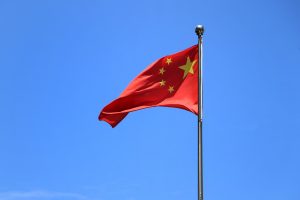In June this year, the Chinese Foreign Ministry announced that about 20 percent of the projects under its ambitious Belt and Road Initiative (BRI) had been affected by the COVID-19 pandemic. At the same press briefing, Wang Xiaolong, director-general at the Foreign Ministry’s International Economic Affairs Department, also revealed that a survey by the ministry estimated that some 30 to 40 percent of projects had been somewhat affected, while approximately 40 percent of projects were deemed to have seen little adverse impact.
Even before COVID-19, the BRI was facing increasing criticism in host countries for its lack of transparency, displacement of local communities, adverse environmental impacts and fears of “debt-trap diplomacy,” among many other issues. With the pandemic inevitably delaying many of BRI’s physical infrastructure projects, will COVID-19 be a nail in the coffin or a turning point for the BRI?
According to the American Enterprise Institute’s China Global Investment Tracker, the value of both Chinese investment and construction fell sharply in 2020 compared to 2019. On the Chinese side, the decline in funding can be attributed to a more cautious approach by Chinese banks toward disbursing unsustainable loans. The restricted movement of labor and goods caused by the border controls imposed by many countries in response to COVID-19 has also inflicted a significant toll in the construction of physical infrastructure projects.
While the COVID-19 situation has improved significantly within China itself, the situation remains bleak in many of the countries hosting BRI projects, from Africa to Southeast Asia. In addition, the global economic slowdown brought on by the pandemic has also increased the likelihood of host countries cancelling or delaying BRI projects, especially large-scale infrastructure projects. In March, Bangladesh announced the cancellation of a 350-megawatt coal-fired thermal plant project.
Many BRI projects have previously been criticized for a lack of transparency and unfair loan conditions; the pandemic has worked to deepen many of these worries. More importantly, many host countries are now voicing these concerns and displeasure toward Beijing. Since COVID-19 hit, many governments have approached Beijing to renegotiate the terms of loans for BRI projects. For example, Pakistan in April requested an ease in the repayment terms for over $30 billion in loans associated with various power projects under the China Pakistan Economic Corridor (CPEC).
Undoubtedly, COVID-19 has raised serious questions with regard to the future of Xi Jinping’s grand initiative. Notwithstanding the existing criticisms and mistrust toward Chinese intentions for the BRI, it is unlikely that a BRI focused on physical infrastructure construction and connectivity will be able to return to its former scale and glory, at least within the short and medium term, as China grapples with increasing debt defaults and project delays as a result of the pandemic.
Nevertheless, COVID-19 need not be the nail in the coffin for the BRI. It could also be an opportunity for Beijing for rethink the strategy and focus of the BRI, or order to better meet the needs of a post COVID-19 world.
Even before the pandemic hit, China had already begun to expand the BRI beyond physical infrastructure projects. In 2015, China launched the Digital Silk Road, focused on the development of information and communications technology (ICT) infrastructure in BRI markets. Last year, China announced 5G investments in various countries, including Cambodia and Russia.
At the first BRI forum in 2017, China, along with participating countries and various international organizations, issued the Beijing Communique of the Belt and Road Health Cooperation and Health Silk Road. Since then, China has initiated several regional health cooperation projects with its neighbors, including the China–ASEAN Human Resources Training Program of Health Silk Road, which aims to train more than 1,000 ASEAN healthcare professionals by 2022.
Just as COVID-19 has brought to light the insufficiencies in global healthcare and ICT infrastructure, especially within developing countries, it also provides an opportunity for China to fill these gaps through its Health Silk Road and Digital Silk Road. COVID-19 thus presents both a challenge and an opportunity for the BRI.
Redirecting the BRI to focus on soft infrastructure projects in the digital and health sectors could help rejuvenate interest in the BRI in a post-COVID-19 world. Investments in such projects could also provide an opportunity for China to expand its soft power and shape its image as a responsible great power.
However, just as the traditional BRI is susceptible to criticisms and suspicion of other countries, the Health Silk Road and Digital Silk Road are likewise open to criticism, as evident from the growing pushback against the Chinese telecommunications giant Huawei in many Western countries. The trust and confidence of host countries in China’s push to accelerate the Health Silk Road and Digital Silk Road will be directly dependent on China’s ability to avoid mixing geopolitical rivalries with upcoming BRI projects.
Lee YingHui is an associate research fellow with the Maritime Security Programme at the S. Rajaratnam School of International Studies, Nanyang Technological University, Singapore.

































